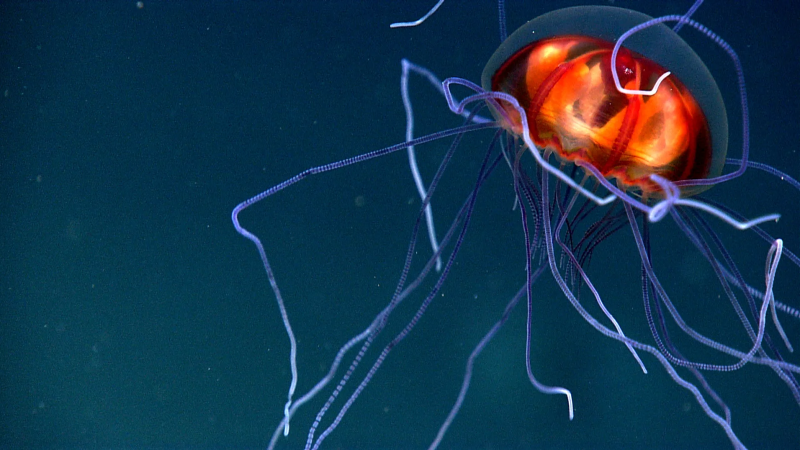What does a jellyfish sting look like? Here's everything you need to know.
Whether you’re surfing in the ocean or taking a stroll along the shore, a jellyfish sting is one of the last things you’ll want to experience if you’re trying to spend some much needed time by the water. A painful sting may interrupt your beach day plans, but the good news is that most jellyfish stings will only result in mild symptoms that can be healed through first aid.
USA TODAY asked the experts to weigh in on everything you need to know about jellyfish stings, from identifying symptoms to breaking down the steps you’ll need to take to heal your sting in no time.
What does a jellyfish sting look like?
A jellyfish sting will look a little different on everyone, and how severe your symptoms are will depend on the type of jellyfish you’ve been stung by. However, one thing is for certain: if you’re stung by an adult jellyfish, the first thing you’re going to experience is an “immediate, severe pain,” says Dr. Jill Grimes, MD, FAAFP, the author of "The ULTIMATE College Student Health Handbook."
“The mildest reactions can look like little raised red bumps that coalesce into plaques,” says Dr. Luke Maxfield, a board certified dermatologist. The sting will mimic the outline of where the jellyfish’s tentacles came in contact with your skin, and consequently, “you can end up with some wild and bizarre temporary tattoos, so to speak,” he says.
In the case that your body experiences a delayed reaction to a jellyfish sting, you may experience inflammation and persistent hyperpigmentation, Maxfield says. Again, this irritation will follow the track of the jellyfish tentacles, he adds. During a severe reaction to a jellyfish sting, it is possible to experience painful blistering. Coming in contact with venomous jellyfish species may lead to necrosis of the skin, Maxfield notes.
The sting of certain types of jellyfish can be fatal, and tragically, may kill a person within a matter of minutes, per Mount Sinai Hospital. While it’s rare to come across venomous jellyfish in coastal areas in the U.S., it’s not impossible. Box jellyfish, Portuguese man-of-war, lion’s mane and sea nettle are among highly venomous jellyfish species whose stings require immediate medical attention, per UF Health. If you experience any systemic symptoms as a result of a severe sting, such as abdominal pain, breathing difficulties, muscle spasms or heart problems, it is imperative that you seek emergency care, per Mayo Clinic.
How do you treat a jellyfish sting?
In the event “you start to feel stings while swimming, get out of the water immediately,” Grimes says.
When it comes to treating a mild jellyfish sting, “the favorite adage, of course, is urinating on it,” says Maxfield. However, from a medical standpoint, “it's not generally advised,” he says, because it can trigger leftover jellyfish stingers “to discharge more toxins” from its nematocysts. For the same reason, you’ll want to avoid pouring tap water onto your sting.
Rinsing your sting with ocean water, on the other hand, won’t cause the stingers to discharge additional toxins. Therefore, it is one of the most effective and readily available steps you can take to remove the stingers from your skin, Maxfield explains.

If you still see tentacle fragments attached to your skin, Grimes underscores not removing them with your hand. Rather, “use tweezers if available, or use a credit card to quickly scrape off remaining tentacles,” she says.
To alleviate the itch and burn of your sting, applying a cool compress can help ease your discomfort, Grimes says. You should “never put ice directly on the skin, but you can hold ice in a towel as a compress,” she recommends. You can also apply a “topical steroid cream or ointment on your torso or extremities.” However, if the sting involves your face or genitals, “you need to be seen by a doctor,” she says.
Taking oral antihistamines, such as diphenhydramine, fexofenadine, loratadine and cetirizine, can also help counter the effects of your sting, Grimes says.
How long do jellyfish stings last?
During the acute phase, which lasts a few days, you’ll find that your jellyfish sting “can actually get worse before it gets better,” Maxfield says. Over the course of a week, you’ll begin to notice the damage to your skin will begin to heal.
How long does chlorine rash last?How to clear up this common skin irritation.
Then, you’ll be left with delayed hyperpigmentation at the former site of the jellyfish sting. Depending on the person, the time that it takes for hyperpigmentation to fade will vary. It can take “anywhere from one to two weeks, to a month,” he says.
Disclaimer: The copyright of this article belongs to the original author. Reposting this article is solely for the purpose of information dissemination and does not constitute any investment advice. If there is any infringement, please contact us immediately. We will make corrections or deletions as necessary. Thank you.






